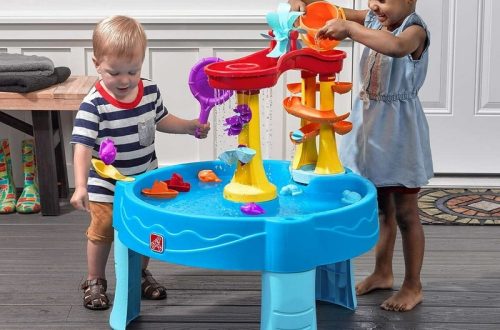Part 1: Understanding Toy Car Batteries
Toy car batteries are a crucial component of remote-controlled vehicles. Before attempting to recharge them, it is essential to understand the basics of toy car batteries.
Types of Toy Car Batteries
There are various types of toy car batteries in the market, including nickel-cadmium (NiCad), nickel-metal hydride (NiMH), and lithium polymer (LiPo) batteries. Each type has its characteristics, such as voltage ratings, capacity, and charging requirements. It is crucial to determine the type of battery your toy car uses before attempting to recharge it.
Voltage and Capacity
Toy car batteries are available in diverse voltage ratings and capacity levels, each significantly impacting the battery’s performance. The voltage rating directly determines the power output, influencing the speed and overall capabilities of the toy car. Conversely, the capacity level dictates the duration that the battery can power the toy car, impacting its runtime before requiring a recharge.
Understanding the specific voltage and capacity of your toy car battery is crucial for several reasons. Firstly, it is essential for selecting the appropriate charger to ensure safe and effective recharging. Different voltage and capacity specifications require specific charging parameters to ensure optimal performance and prevent potential damage. Therefore, having a clear understanding of these battery specifications ensures that the correct charger is utilized, promoting both safety and efficiency during the recharging process.

Part 2: Recharging Toy Car Batteries Safely
Recharging toy car batteries involves paying careful attention to safety measures to avoid damage to the battery and ensure optimum performance.
Use the Right Charger
Using the correct charger is paramount for effectively recharging toy car batteries. It is important to understand that each type of battery requires a specific charger designed to deliver the appropriate voltage and current to ensure safe, efficient, and effective recharging.
Using the wrong charger poses notable risks and potential ramifications. For instance, using an incompatible charger can lead to overcharging the battery, a situation where the battery continues to receive a charge after reaching full capacity, potentially leading to overheating, structural damage, and reduced battery life. Overcharging can also cause electrolyte gassing, a process that releases flammable hydrogen gas, posing serious safety hazards. On the other hand, using a charger that delivers insufficient voltage and current can result in undercharging the battery, leading to the incomplete replenishment of the battery’s capacity. This can result in reduced performance, diminished playtime, and premature battery failure.
Therefore, ensuring that the correct charger is used is essential for both the performance and safety of the battery. Employing the appropriate charger designed for the specific battery type and voltage is crucial in providing the necessary power for efficient recharging while preventing the risks associated with overcharging or undercharging.
To further emphasize the significance of using the correct charger, it is essential to adhere to the manufacturer’s recommendations and guidelines regarding charger compatibility. Understanding and following the prescribed charging specifications for the toy car batteries are vital to preventing potential risks, safeguarding the battery’s longevity, and optimizing its overall performance.
By prioritizing the use of the correct charger, enthusiasts can maintain the reliability and safety of their toy car batteries. This practice not only ensures effective recharging but also contributes to the extended lifespan and consistent performance of the batteries, ultimately enhancing the overall experience of using toy cars.

Charging Environment
It is important to create a safe charging environment for toy car batteries. Ensure that the charging area is well-ventilated and away from flammable materials. Avoid charging the batteries in extreme temperatures, as excessive heat or cold can affect the charging process and the overall lifespan of the battery.
Part 3: Steps for Recharging Toy Car Batteries
Recharging toy car batteries involves a series of steps to ensure a safe and effective process.
Check the Battery Condition
Before initiating the recharging process for a toy car battery, it is crucial to conduct a thorough assessment of its condition. Carefully examine the battery for any visible signs of damage that may compromise its integrity or safety. Look for leaks, which can indicate a breach in the battery’s casing and potential electrolyte leakage. Such leaks pose serious safety hazards and can compromise the battery’s performance. Additionally, check for bulges or unusual swelling, which can be indicative of internal pressure buildup, potentially resulting from overcharging or other underlying issues. These visible indicators serve as essential warnings for a potentially faulty or damaged battery and should be addressed before proceeding with the recharging process.
Notably, if the battery exhibits any of the aforementioned warning signs, it is crucial to address the issue before attempting to recharge it. A damaged battery can pose significant safety risks, and attempting to recharge it without addressing the underlying issues can exacerbate these risks further. In such cases, it is advisable to seek expert guidance or consider replacing the battery to ensure the safety and performance of the toy car.
On the other hand, if the battery appears to be in good condition with no visible signs of damage, it is generally safe to proceed with the recharging process. However, it is still advisable to exercise caution and adhere to the recommended charging guidelines to ensure a safe and effective recharge.

Connect the Charger
Carefully connect the charger to the toy car battery, ensuring that the positive and negative terminals are properly aligned. Follow the instructions provided with the charger to set the appropriate charging mode and voltage level for the specific type of battery. It is important to monitor the charging process closely and disconnect the charger once the battery is fully charged to prevent overcharging.
Part 4: Tips for Maintaining Toy Car Batteries
Proper maintenance is essential for maximizing the lifespan and performance of toy car batteries.
Storage and Discharge
It is crucial to maintain toy car batteries at the appropriate voltage level when storing them. Avoid fully discharging the batteries before storage, as this can lead to potential degradation of the battery’s capacity and overall lifespan. Instead, aim to maintain the batteries at a partial charge level, which helps preserve their performance and longevity.
Furthermore, it is advisable to store the batteries in a cool, dry place to prevent degradation and potential damage. Exposure to extreme temperatures and high levels of humidity can adversely impact the battery’s performance and structural integrity. By storing the batteries in a controlled environment, such as a dry and cool area, enthusiasts can help safeguard the batteries against potential deterioration and ensure that they remain in optimal condition for future use.
By adhering to these storage practices, hobbyists can effectively preserve the performance and longevity of their toy car batteries, ensuring that they remain reliable and functional for extended periods.
Regular Inspections
Regularly inspecting toy car batteries for any signs of wear or damage is crucial for maintaining their performance. Look for any leaks, bulges, or changes in the battery’s appearance, and replace any damaged batteries immediately. Additionally, follow the manufacturer’s recommendations for periodic maintenance and cleaning to ensure the batteries remain in optimal condition.
In conclusion, understanding toy car batteries, recharging them safely, following the proper steps, and maintaining them are essential for ensuring the longevity and performance of toy car batteries. By following these guidelines, hobbyists can enjoy their remote-controlled vehicles to the fullest and avoid unnecessary expenses on frequent battery replacements.


